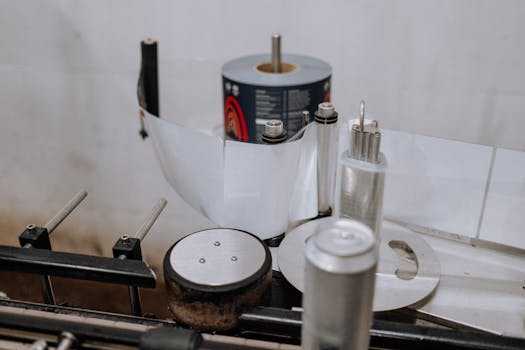
The housing market, long plagued by delays and complexities, is experiencing a seismic shift. A new wave of fast-track processes is sweeping the nation, promising to dramatically reduce the time it takes to deliver new homes. This innovative approach tackles bottlenecks in the construction and approval processes, offering a beacon of hope for first-time homebuyers, families seeking larger spaces, and investors looking for quicker returns. This article delves into the details of these fast-track initiatives, exploring their potential impact and addressing potential concerns.
Addressing the Housing Crisis: Speeding Up New Home Construction
The current housing shortage is a critical issue across many countries. High demand, coupled with lengthy approval processes and material shortages, has resulted in significant delays in new home construction. This has driven up prices, making homeownership increasingly unattainable for many. Fast-track processes aim to directly address this problem by streamlining various stages of the building process, from initial planning permission to final completion.
Key Elements of Fast-Track Homebuilding Programs
These programs typically incorporate several key elements:
- Pre-fabricated components: Utilizing pre-fabricated walls, roofs, and other components significantly reduces on-site construction time. This modular construction approach allows for parallel work streams, speeding up the overall process.
- Streamlined planning permission: Many fast-track initiatives involve simplified planning applications and quicker approval times. This often includes pre-approved designs and reduced bureaucratic hurdles.
- Digitalization of the building process: Adopting Building Information Modeling (BIM) and other digital tools allows for better project management, improved communication, and reduced errors. This leads to faster and more efficient workflows.
- Pre-arranged financing and partnerships: Secure financing and pre-arranged partnerships with suppliers and contractors can eliminate delays associated with securing funding and materials.
- Improved labor efficiency: Implementing best practices, technological advancements, and well-organized teams improve labor efficiency and reduce construction delays.
How Fast-Track Processes are Changing the Game
Several regions are already implementing variations of these fast-track processes, with impressive results. For example, some municipalities are offering expedited planning permits for projects that meet specific sustainability criteria, encouraging environmentally friendly construction. Other regions are collaborating with private developers to create pre-approved housing developments, combining resources and expertise to expedite delivery.
Examples of Successful Fast-Track Initiatives:
- Prefabricated modular homes: Companies are producing entire homes off-site in factories, significantly shortening the on-site construction period. These homes are then transported and assembled, often minimizing disruption to local areas.
- Government-backed initiatives: Several governments are offering financial incentives and streamlined regulatory processes to encourage faster home construction. This could include tax breaks for developers using fast-track methods or reducing the administrative burden of gaining planning permission.
- Public-private partnerships: Collaboration between government agencies and private developers is leading to large-scale projects with greatly improved efficiency. This partnership model often leverages the expertise of both sectors to overcome challenges and accelerate timelines.
Benefits and Challenges of Fast-Track Homebuilding
The advantages of fast-track homebuilding are undeniable. Faster delivery times mean more homes available quicker, helping to address the housing shortage and potentially stabilize home prices. The use of prefabricated components can also lead to more consistent quality and reduced waste.
However, challenges remain. Concerns have been raised about the potential impact on the quality of construction, the environmental sustainability of prefabricated materials, and the potential displacement of traditional construction workers. Addressing these concerns is crucial to ensure that fast-track processes deliver both speed and quality, ultimately leading to sustainable and affordable housing solutions.
Addressing Potential Concerns:
- Quality Control: Rigorous quality control measures must be implemented throughout the entire process, from the design and manufacturing of prefabricated components to the final assembly and inspection of the completed home.
- Environmental Impact: The environmental impact of prefabricated materials and construction methods must be carefully considered and minimized, with a focus on using sustainable materials and reducing waste.
- Job Displacement: Retraining and upskilling initiatives can help mitigate potential job losses among traditional construction workers by providing opportunities in the new fast-track construction sector. Furthermore, the increased demand for homes may create additional jobs in related industries.
- Affordability: While fast-track methods can potentially lower the cost of construction, careful consideration must be given to ensuring the final homes remain affordable for a broad range of buyers.
The Future of Homebuilding: Embracing Efficiency and Innovation
Fast-track processes represent a significant shift in the homebuilding industry. By embracing innovation and streamlining processes, the industry is actively addressing the pressing need for more affordable and readily available housing. While challenges exist, the potential benefits are immense. As these initiatives mature and address the associated concerns, they promise to revolutionize the way homes are built, delivering much-needed relief to the housing market and providing more people with the opportunity to achieve the dream of homeownership. The future of homebuilding is undoubtedly fast-paced, efficient, and innovative, driven by the urgent need for affordable and sustainable housing solutions. The key is to manage the transition responsibly, ensuring quality, sustainability, and job security are prioritized alongside speed and efficiency.



















